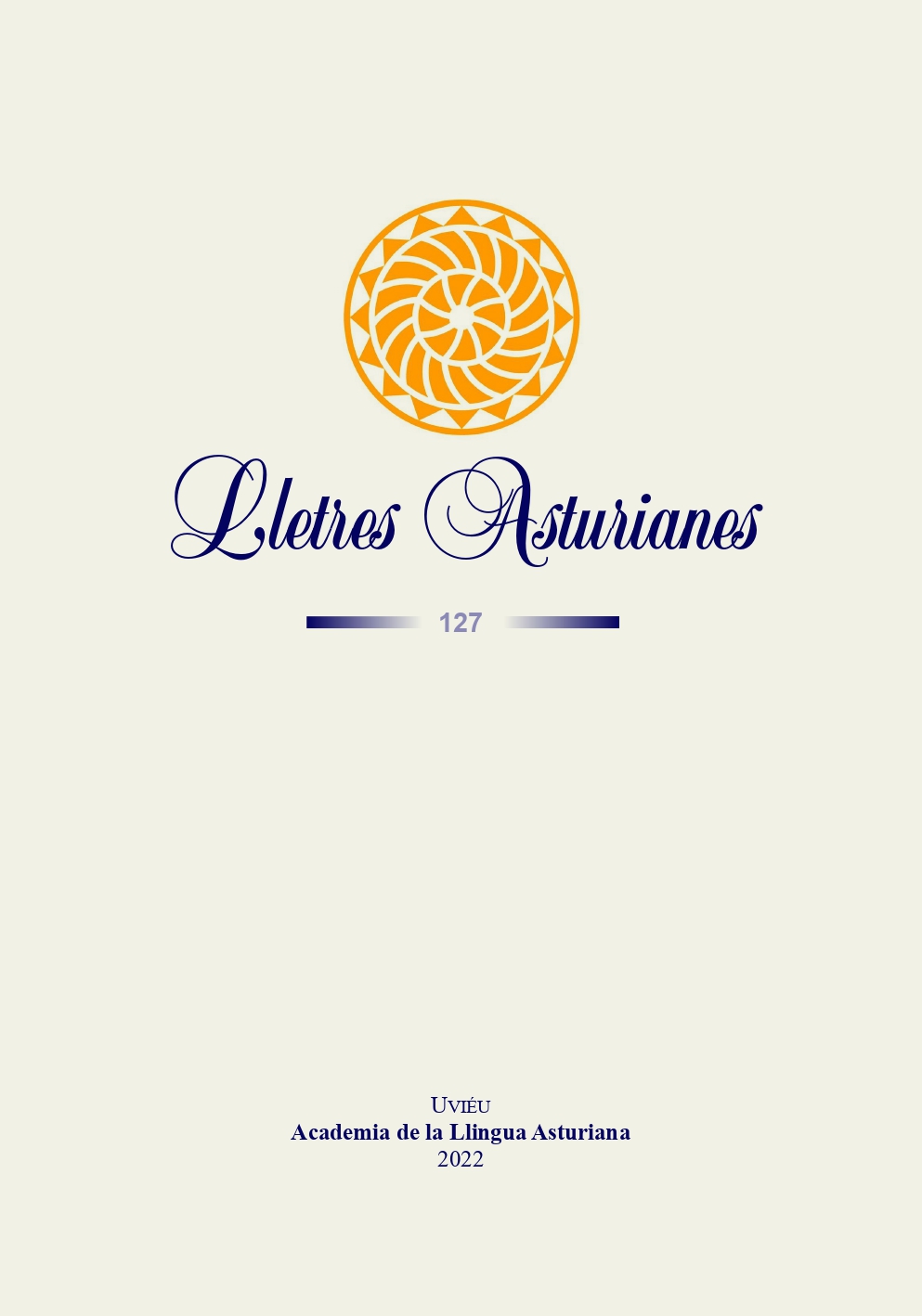Abstract
In the mid-2021, the Secretaría Llingüística del Navia-Eo created a lexicographic commission in order to create the first Eonavian Normative Dictionary. This work is trying to respond to a demand which the West As-turias’ society has been asking to the Principado de Asturias Government for many years. The reason of this movement is the almost lack of lexico-graphic works in Eonavian, which are reduced to monographic studies of a particular area and are, in most of cases, no longer in print and almost im-possible to get. In that sense, the purpose of the commission, formed both by experts in lexicography and the Navia-Eo, is create a normative usage synchronic dictionary, which contains the speech of every West territory in which Eonavian is spoken. As well as his antecessor, the Diccionario de la Llingua Asturiana, which is written in Asturian, the Eonavian Dictionary uses this language in its entries. This fact contributes not only to the normal-ization of this language, but also its standardization. This is due to the decisions the members of the commission are making around orthography and syntax issues and that are not reflected in any study or work. The meth-odology that is been applied to create this dictionary is based on the principles of modern lexicography, which considers substitutability, cate-gorical identity and non-circularity laws. Furthermore, the lexicographic commission is reaching agreements in other methodological decisions to adapt this dictionary to the sociocultural situation of the territory, such as which terms are going to be chosen for the main entry or the selection of the words that are going to be included. It is important to highlight in this point a concession to the dialectology which is not usually permitted in normative dictionaries: the inclusion of palatalized and non-palatalized varieties in Eonavian.
References
Acevedo y Huelves, E. y Fernández Fernández, M. (1932): Vocabulario del bable de Occidente. Madrid, Junta para la Ampliación de Estudios e Investigaciones Científicas.
ALLA (2000): Diccionariu de la Llingua Asturiana (DALLA). Uviéu, ALLA.
Cano González, Ana María (1993): «La elaboración del DALLA (Diccionariu de l’Academia de la Llingua Asturiana)». Actes du XX Congrès International de Linguistique et Philologie Romanes. Tome IV, Section VI – Lexicografie/Iberoromania, 576-590.
Díaz López, Jacinto & García “Galano”, Manuel (1994): Vocabulario da Roda. Uviéu, Serviciu de Publicaciones.
Fernández López, Adelina & Pérez Sánchez, Susina (2000): Cousas de Boal. Bual, Asociación de Amas de Casa de Bual.
Fernández Vior, José Antonio (1998): Vocabulario da Veiga. Uviéu, Academia de la Llingua Asturiana.
García García, José (1983): El habla de El Franco. Mieres, I. B. Bernaldo de Quirós.
González Fernández, Alfredo (s.f): Material lexicográfico inédito facilitao pol autor.
López García, María Teresa (2001): Vocabulario de Bual y algúacousa más. Uviéu, Fundación Nueva Asturies.
Lozano Sol, Marcelino (2014): Castaedo y Monón en poucas palabras. Vocabulario y memoria viva. Uviéu, Trabe.
Muñiz, Celso (1978): El habla del Valledor. Estudio descriptivo del gallego-asturiano de Allande (Asturias-España). Amsterdam, Academische Peers.
Seco, Manuel. (1987): Estudios de lexicografía española. Madrid, Thomson-Paraninfo.
Secretaría Llingüística del Navia-Eo (2006): Informe sobre a fala ou gallego-asturiano. Úa perspectiva hestórica, social y llingüística. Uviéu, ALLA.
Secretaría Llingüística del Navia-Eo (2007): Normas ortográficas del gallego-asturiano. Uviéu, ALLA.
Secretaría Llingüística del Navia-Eo (2013): El meuprimeiro vocabulario na fala. Uviéu, ALLA.
Suárez Fernández, Xosé Miguel (1991): Vocabulario de Mántaras (Tapia) y dalgunos refranes o ditames. Uviéu, Academia de la Llingua Asturiana.
Suárez Fernández, Xosé Miguel (1996): Vocabulario de Mántaras (Tapia). Aportacióis al léxico del galego-asturiano. A Caridá, Xeira.
Suárez Fernández, Xosé Miguel (2000): «Primeiros usos escritos de -y- <-lj-,c'l-, -g'l en
gallego-asturiano». Lletres Asturianes 75, 99-110.
Suárez Fuente, David (2018, 7 d’abril): «El occidente se une para crear el diccionario de la fala». El Comercio.
Suárez López, Mª Elena y García López, José (2021): Vocabulario (no vaqueiro) de Villayón. Edición dos autores.
Varela Aenlle, Carlos Xesús (2014): Contribución ao diccionario galego: o léxico do galego de Asturias (LeGA). Universidade de Vigo. http://hdl.handle.net/11093/130

